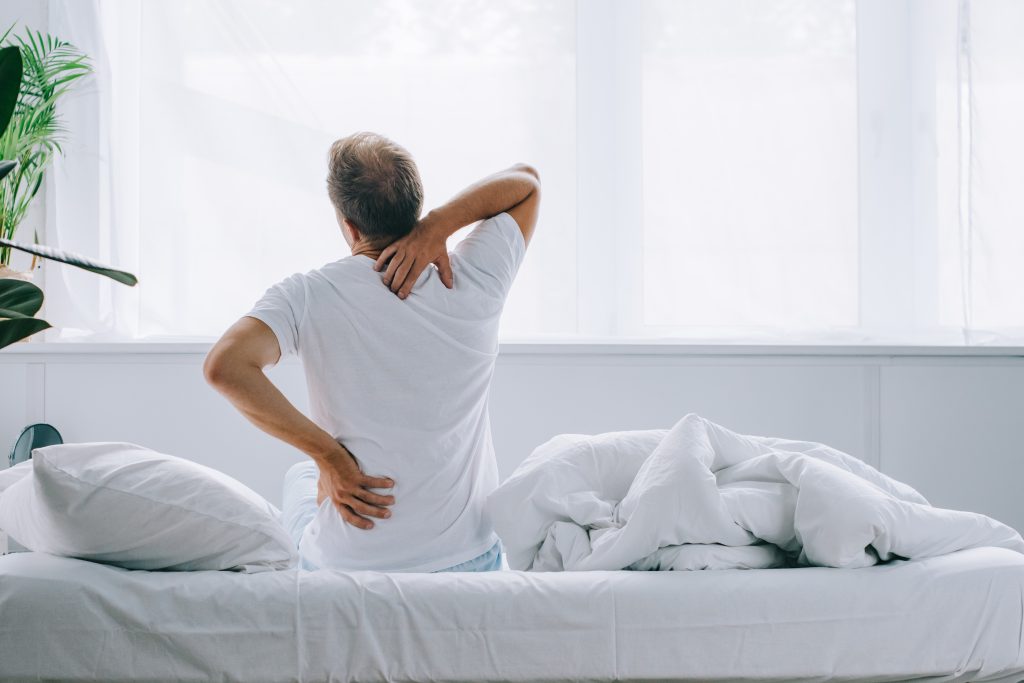Getting a good night’s sleep is vital for your overall health and well-being, but chronic pain can make restful sleep feel like a challenge. For many seniors, finding the right sleeping position can make a world of difference in reducing discomfort and promoting better sleep quality. Adjusting how you rest can ease pressure on painful areas and allow your body to relax more fully. Here’s a guide to sleep positions that can help seniors manage chronic pain and wake up feeling more refreshed.
Understanding the Connection Between Sleep and Pain
Chronic pain and sleep problems often go hand in hand. When you’re in pain, it can be harder to fall asleep, stay asleep, or get the deep, restorative rest your body needs. Lack of sleep, in turn, can worsen pain, creating a frustrating cycle.
Finding a comfortable sleeping position is one way to break this cycle. The right position can reduce strain on your joints, muscles, and nerves, helping you feel more at ease throughout the night.
Side Sleeping with Support for Joint Pain
For seniors experiencing joint pain, especially in the hips, knees, or shoulders, sleeping on your side with proper support can be beneficial. Place a firm pillow between your knees to keep your spine aligned and reduce pressure on your hips. If you have shoulder pain, try resting on the opposite side and hug a pillow to support your upper arm.
Side sleeping is also helpful for reducing snoring and improving breathing, making it an excellent choice for seniors with sleep apnea or other respiratory issues.
Back Sleeping for Lower Back Pain
If you suffer from lower back pain, sleeping on your back can help maintain the natural curve of your spine. To enhance comfort, place a small pillow or rolled-up towel under your knees. This adjustment reduces pressure on your lower back and can alleviate discomfort.
For additional support, consider using a lumbar roll or a specially designed pillow for back sleepers. Keeping your head, neck, and spine aligned is key to reducing tension and promoting better sleep.
Fetal Position for Spinal Pain
The fetal position, where you lie on your side with your knees drawn toward your chest, can help ease pain related to herniated discs or other spinal issues. This position creates space between your vertebrae and reduces pressure on your spine.
Make sure to keep your spine relatively straight to avoid straining your neck or lower back. A firm mattress and supportive pillow can enhance the benefits of this position.
Reclined Sleeping for Arthritis or Acid Reflux
For seniors dealing with arthritis or acid reflux, a reclined position can be a game-changer. This position helps reduce joint stiffness and discomfort while also preventing stomach acid from traveling back up the esophagus.
You can achieve this position with an adjustable bed or by propping yourself up with pillows. Make sure the angle is comfortable and provides enough support for your lower back and neck.
Stomach Sleeping: Proceed with Caution
Sleeping on your stomach is not usually recommended for seniors, especially those with neck or back pain. This position can strain your spine and cause discomfort. However, if you find it hard to sleep in any other way, try placing a pillow under your pelvis to reduce pressure on your lower back. Use a thin pillow or no pillow at all for your head to minimize neck strain.
Choosing the Right Mattress and Pillow
Your mattress and pillow play a critical role in supporting your sleep position and alleviating chronic pain. A mattress that’s too soft can cause your body to sink, leading to misalignment and discomfort. On the other hand, a mattress that’s too firm can create pressure points.
Look for a medium-firm mattress that provides both support and cushioning. Memory foam and hybrid mattresses are popular choices for seniors with chronic pain. When it comes to pillows, select one that supports the natural curve of your neck and keeps your spine aligned with your head.
Listening to Your Body
Finding the best sleep position often requires some trial and error. What works for one person may not be ideal for another, so it’s important to listen to your body and adjust as needed. Pay attention to how you feel in the morning—if you wake up with less pain, you’re likely on the right track.
If you’re unsure about what’s causing your pain or how to improve your sleep posture, consider consulting a doctor or physical therapist. They can provide personalized recommendations based on your specific needs.
Establishing a Bedtime Routine
In addition to adjusting your sleep position, creating a calming bedtime routine can help you relax and prepare for restful sleep. Gentle stretches, a warm bath, or soothing music can ease tension and reduce pain before bedtime.
Make your bedroom a comfortable, quiet, and dark space to encourage relaxation. Avoid using electronic devices right before bed, as the blue light can disrupt your sleep patterns.
Conclusion
Chronic pain doesn’t have to rob you of a good night’s sleep. By finding the right sleep position and making small adjustments to your sleeping environment, you can reduce discomfort and enjoy more restful nights. Whether you prefer sleeping on your side, back, or in a reclined position, the key is to keep your body supported and aligned.
Remember, it’s okay to experiment with different positions and supports until you find what works best for you. With a little patience and attention to your body’s needs, you can wake up feeling more refreshed and ready to take on the day. Sleep well and take care of yourself—you deserve it.

